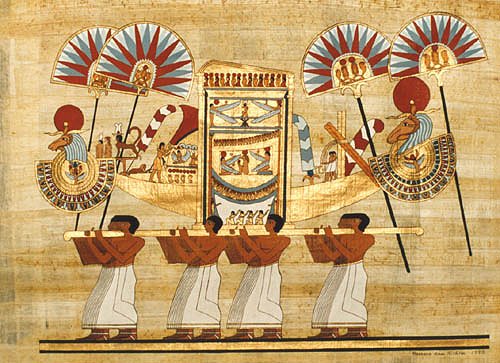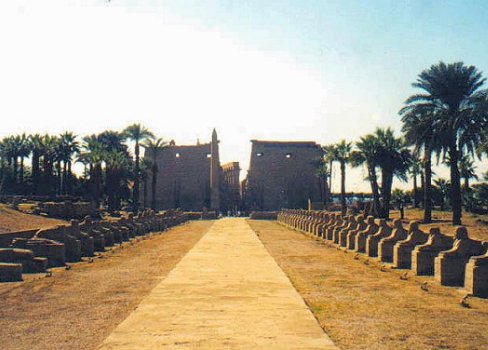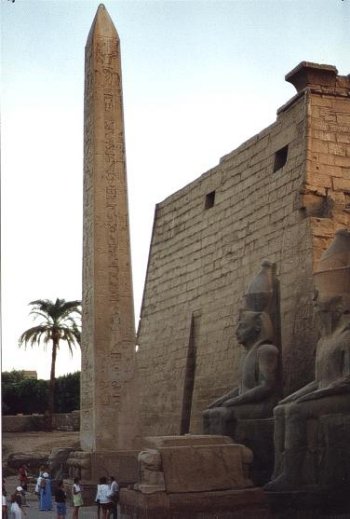 |
Many festivals are held in Egypt throughout the year; however, none is more important than the Festival of Opet. The Temple of Luxor was built to celebrate the rituals of Opet, which were designed to reconcile the human side of Pharaoh with the divine aspects of his office. Every year, in the second month of Akhet (during the Innundation), the celebration of Opet reached its climax as the god Amun left Karnak and was carried in a procession that lead overland along this avenue to the Temple at Luxor. Due to the flooding, work in the fields was temporarily suspended giving the average citizen time to enjoy the celebrations.
 |
I wish such honored guests as yourselves could see the procession, but you've arrived too early to celebrate Opet, which occurs in your month of Augustus. A pity, for it is a magnificient spectacle that includes high ranking officials and priests, soldiers and citizens, singers, dancers, musicians, and, of course, Pharaoh — may he be given life, health, and prosperity! Imagine a modern day New Year's Eve in Times Square, Carnival in Venice, or Mardi Gras in New Orleans and you will have some idea of what Opet is like for Ancient Egypt. During the reign of Hatshepsut, the procession to and from Luxor was made overland with Amun's barque being carried by wab priests. In later years one and sometimes both legs of the journey were made via the river. This grand processional brought Amun along the same path we're taking to the temple gate.
 |
The structure we see here is a 19th Dynasty addition known as the Great Pylon of Ramses II. When the original temple was built, its axis lay in a straight line. Yet, Horemheb's dromos approached the temple at an angle. Ramses' architect compensated for this by building his pylon and great courtyard at a slight angle to the earlier portion of the temple. The pylon is nearly 79 feet (24 meters) high and has been carved with reliefs depicting His Majesty's victory at the Battle of Kadesh. Scenes on the west tower are of pharaoh attending a war council with his princes and generals. There are also scenes from inside the fortified camp that show horses being trained, chariots being repaired, and the king's pet lion being fed. Those on the east tower are scenes of the battlefield, including Ramses firing arrows at the Hittites from his chariot with hundreds of dead or wounded and fleeing enemy soldiers around him. The great victory is described in hieroglyphs along the bottom of the pylon walls.